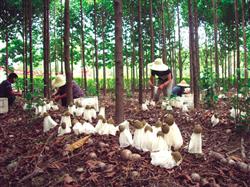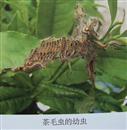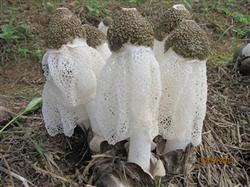Dictyophora planting: how can Dictyophora produce high yield?

How can Dictyophora be planted with high yield? Please introduce the method of Dictyophora planting in order to obtain high yield, we should pay attention to the following points: 1. Cultivation site: select sandy loam woodland with convenient drainage and irrigation, and make a border under a forest with a canopy degree of 80% / 90%, with a depth of 15-20 cm, a width of 40 ─ 50 cm, and a north-south direction, with the length depending on the amount of feed and the site. 2. Spreading sowing: select dry and unmoldy fresh wheat straw, soak in water (the water content is about 65%), fish out and sow in the border, one layer of wheat straw, one layer of bacteria, a total of two layers of material and two layers of seed. The upper layer of bacteria accounted for 2 to 3 of the total sowing amount, and the sowing rate was 1 bottle of 750 ml bacteria for every 5 kg of wheat straw. After sowing in the second layer, put less soaked wheat straw on it. The culture material should be compacted and 2 cm above the ground. 3. Seasonal arrangement: in North China, Dictyophora can be sown from April to July. Sow in April and harvest from June to July; sow in May and harvest from July to August; sow in June and harvest from August to September; sow in July and harvest from September to October. 4. Fungus management: ⑴ covering soil immediately after sowing 3-4 cm thick soil layer, covering soil particles should not be too thick and fine, require clean and fertile. About 20 days after sowing, when the hyphae of Dictyophora crosses the surface of the soil layer, the soil can be covered for 1 time, 1-2 cm thick. After ⑵ shading and sowing, when the hyphae are covered with soil, build a small arch shed on the border surface, the height of the shed is 30-50 cm, and the width depends on the width of the border. The shed is covered with grass or old gunny bags to protect against wind and shade. ⑶ water retention kept the water content of wheat straw and soil layer stable, and the hypha growth was affected by excessive dryness and humidity. In rainless weather, pay attention to spraying water once every 3-5 days to maintain the humidity of soil cover and culture materials. When it rains, we should pay attention to drainage. For waterproof flooding, we should dig a row of ditches on the edge of the border. The small arch shed should be covered with film on rainy days. The mycelium of Phyllostachys pubescens grows well in wheat straw and can penetrate the overlying soil layer after 40-50 days at natural temperature. It takes 60-65 days from sowing to the expansion of the end of the funiculus to form a granular ball. At the natural temperature from June to September, the mycelium of ⑷ grew normally and the bacterial ball appeared at the tip of the funiculus on the soil surface. The first rice grain, 3-5 days to grow into the size of soybeans, milky white, smooth surface. After 2-4 days, it was the size of peanut, and the fungal bristles began to appear on the surface of the ball, showing grayish white. After 4-6 days, it can grow to the size of walnut or egg, and then fade after 16 days, and the fungus ball is light gray or grayish brown. When the light is strong, the color of the fungus ball is heavier and lighter when the light is weak. When the bacterial ball no longer increases, it shows that it has matured. It takes 21-23 days from the formation to the mature cracking of the bacterial ball in the mature stage of ⑸. In this period, we must focus on humidity management. On the one hand, it is necessary to properly spray water to increase the water content of the substrate from 65% to 75%; on the other hand, to ensure that the small ambient air relative humidity of the bacterial ball growth is more than 80%. At the same time, it is necessary to give weak light stimulation, uncover the cover on the arch shed for 1 hour every day, and cover the film strictly in case of windy weather to prevent the fungus ball from drying. When the mature bacterial ball is 22-26 ℃ and the air relative humidity reaches 85%-95%, it can crack. The top of the initial ball was broken, and the cap and stalk were extruded in turn. When the stalk protrudes, spit out the skirt between the stalk and the cap. 5. Harvest and processing: when the opening degree of the bacterial skirt reaches the maximum, it should be harvested immediately. When harvesting, pick the whole fruiting body from under the fungal receptacle, remove the cap and fungal receptacle, keep the skirt and stalk intact and dry on a clean white cloth. When placing, pay attention to the mushroom skirt to be unfolded, the fungal stalk to be straight, in order to obtain neat and beautiful goods. Click to get more planting techniques of Dictyophora, click to get more planting techniques of edible fungi
- Prev

Tea planting techniques: what are the diseases and insect pests of tea trees in summer?
What are the diseases and insect pests of tea trees in summer? Please introduce and control methods in summer tea garden focuses on the control of tea cake disease and tea bud blight, and the focus of insect pests is tea caterpillar and tea inchworm. Tea cake disease mainly harms new shoots and tender leaves, the disease spot is sunken on the front of the leaf, the back is steamed bread-like protuberance, and produces gray-white powder spores. Guard against.
- Next

Dictyophora planting: what are the diseases and insect pests of Dictyophora?
What are the diseases and insect pests of planting Dictyophora? Please introduce and guide the prevention and control of Dictyophora is a valuable edible fungus treasure, the use of drugs to control diseases and insect pests is prohibited during the fruiting body growth. Therefore, the prevention and control of diseases and insect pests should start from the environmental factors, give priority to prevention, take comprehensive measures to control methods as follows: (.
Related
- Fuxing push coffee new agricultural production and marketing class: lack of small-scale processing plants
- Jujube rice field leisure farm deep ploughing Yilan for five years to create a space for organic food and play
- Nongyu Farm-A trial of organic papaya for brave women with advanced technology
- Four points for attention in the prevention and control of diseases and insect pests of edible fungi
- How to add nutrient solution to Edible Fungi
- Is there any good way to control edible fungus mites?
- Open Inoculation Technology of Edible Fungi
- Is there any clever way to use fertilizer for edible fungus in winter?
- What agents are used to kill the pathogens of edible fungi in the mushroom shed?
- Rapid drying of Edible Fungi

